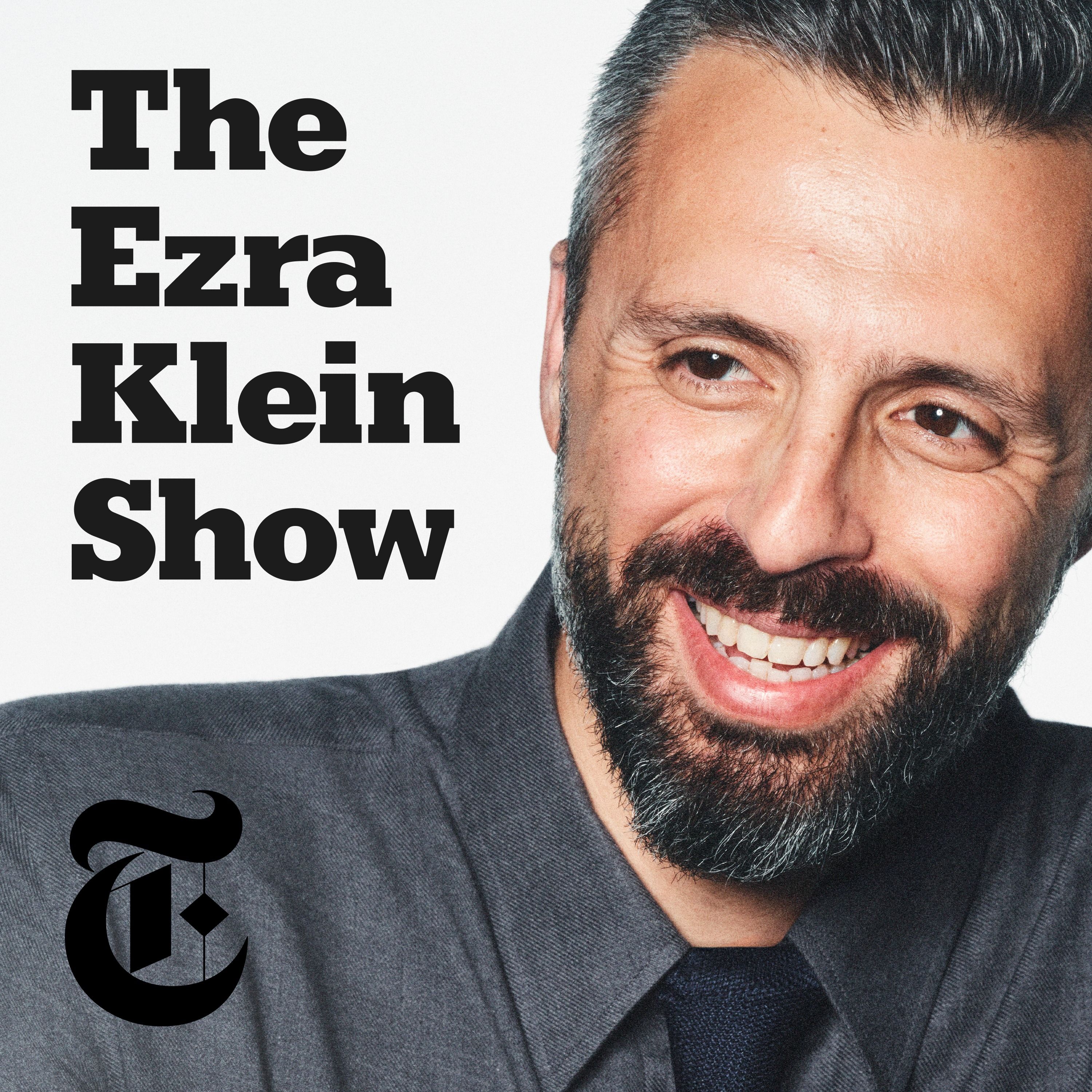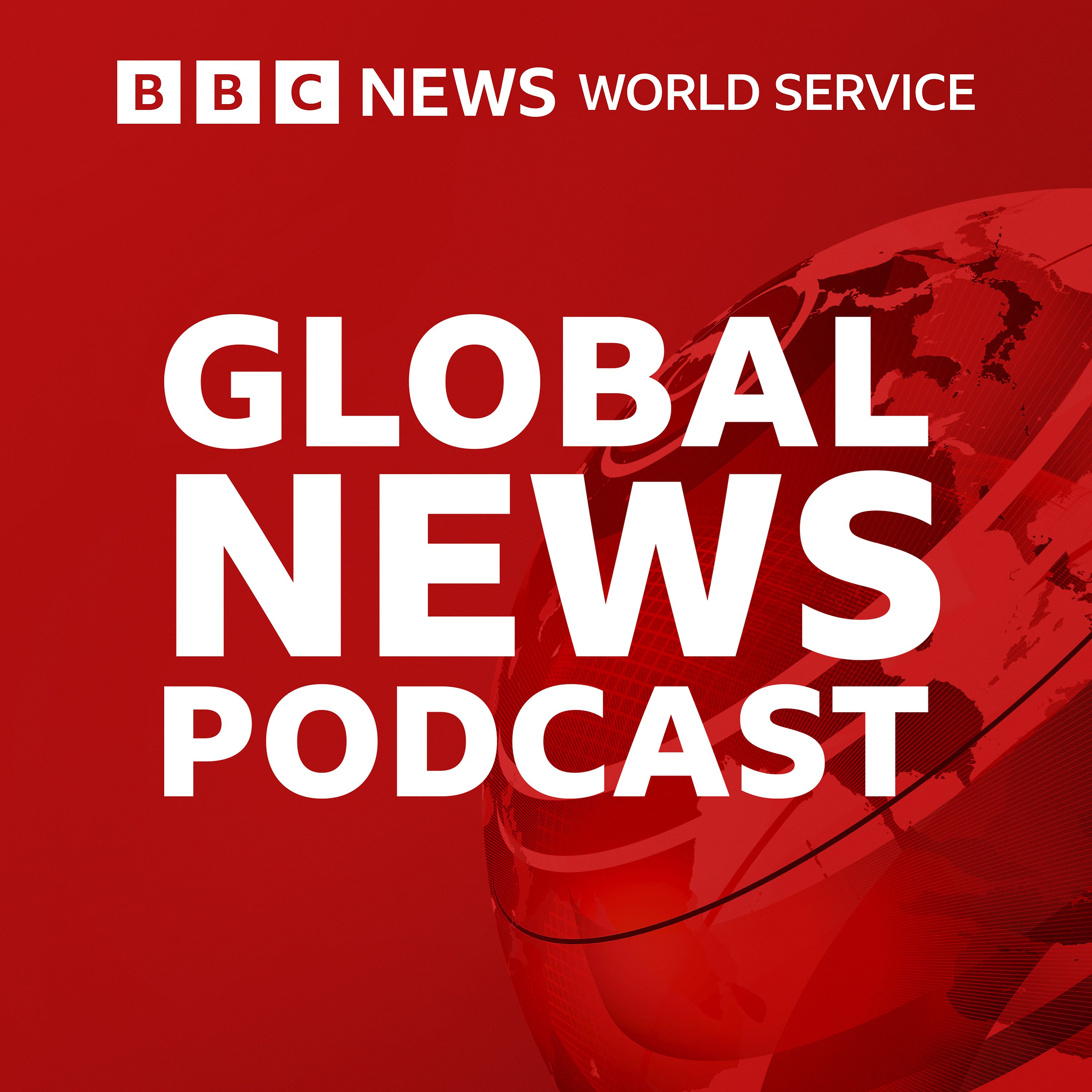
That's Life, I Swear
Every Wednesday, join Rick Barron as he unravels the intricate threads of life's most captivating stories. From heart-pounding political dramas to the awe-inspiring challenges of climate change, he explores the topics that shape our world and define our era.
But this isn't just another talk show. Rick delves deep into the human psyche, examining our beliefs, behaviors, and the obstacles we overcome. He celebrates our triumphs and embraces our imperfections, uncovering the profound lessons hidden in everyday experiences.
The episodes are a journey of self-discovery as he shares stories that mirror our collective identity. These tales aren't just entertaining – they're a reflection of who we are, who we were, and who we aspire to be. They carry the weight of our ancestral legacy, the fire of our dreams, and the depths of our pain.
With each episode, you'll confront your deepest anxieties about yourself, your place in the world, and the future that awaits us all. In understanding these complexities, you'll find inspiration, connection, and perhaps even transformation.
"That's Life, I Swear" isn't just a podcast – it's a weekly rendezvous with the extraordinary nature of ordinary life. Subscribe now, wherever you get your podcasts, and join Rick on this unforgettable exploration of the human experience. After all, that's life, I swear.
That's Life, I Swear
MIT's 2028 Class Diversity: Post-Affirmative Action Enrollment Shifts
We’re diving into a seismic shift at one of the world’s top universities. MIT’s class of 2028 has shattered expectations — and not in a way many hoped.
Supporting links
1. Supreme Court strikes down affirmative action programs in college admissions [SCOTUS Blog]
2. How the public sees the consideration of race in college admissions, hiring {Pew Research]
3. US College Enrollment Decline – 2024 Facts & Figures [College Transitions]
4. Sally Kornbluth [Wikipedia]
5. Edward Blum [Wikipedia]
6. STEM [Wikipedia]
7. SAT [Wikipedia]
Contact That's Life, I Swear
- Visit my website: https://www.thatslifeiswear.com
- Twitter at @RedPhantom
- Bluesky at @rickbarron.bsky.social
- Email us at https://www.thatslifeiswear.com/contact/
Episode Review
- Submit on Apple Podcast
- Submit on That's Life, I Swear website
Other topics?
- Do you have topics of interest you'd like to hear for future podcasts? Please email us
Interviews
- Contact me here https://www.thatslifeiswear.com/contact/, if you wish to be a guest for a interview on a topic of interest
Listen to podcast audios
- Apple https://apple.co/3MAFxhb
- Spotify https://spoti.fi/3xCzww4
- My Website: https://bit.ly/39CE9MB
Other
- Music ...
⏱️ 14 min read
We’re diving into a seismic shift at one of the world’s top universities. MIT’s class of 2028 has shattered expectations — and not in a way many hoped. With Black and Latino enrollment plummeting and Asian American students now making up nearly half of the incoming class, the ripple effects of the affirmative action ban are here. Is this the new face of higher education, or a step back in the fight for diversity?
Welcome to That's Life, I Swear. This podcast is about life's happenings in this world that conjure up such words as intriguing, frightening, life-changing, inspiring, and more. I'm Rick Barron your host.
That said, here's the rest of this story
Seismic Shift at MIT: Diversity Plummets in Post-Affirmative Action Era
In a stunning revelation, the Massachusetts Institute of Technology (MIT) has become the canary in the coal mine for higher education diversity. The prestigious institution's incoming class of 2028 has experienced a dramatic downturn in racial diversity, marking the first tangible impact of the Supreme Court's landmark decision to ban affirmative action.
As the first major university to unveil its freshman class composition since the ruling, MIT's statistics paint a stark picture of change. The once-vibrant tapestry of Black, Hispanic, Native American, and Pacific Islander students has been drastically altered, shrinking from a robust 25% in recent years to a mere 16% for the class of 2028.
The shift becomes even more pronounced when compared to the previous year's enrollment:
- Black student representation plummeted from 15% to just 5%
- Hispanic and Latino presence dwindled from 16% to 11%
- White student enrollment remained relatively stable at 37%, down slightly from 38%
These numbers serve as a wake-up call, forcing us to confront the real-world consequences of the affirmative action ban. As other universities prepare to release their data, the question looms: Is MIT's experience an anomaly or the harbinger of a new era in college admissions?
The implications of this shift extend far beyond campus boundaries, potentially reshaping the future landscape of America's workforce and leadership. As we grapple with these changes, one thing is clear: the debate over diversity in higher education is far from over.
MIT's Diversity Shakeup: Winners and Losers in the Post-Affirmative Action Landscape
As the dust settles on MIT's groundbreaking admissions data, a new picture emerges - one of stark contrasts and shifting demographics. While some groups saw their numbers plummet, others experienced a surprising surge.
The most dramatic rise? Asian American students comprise a whopping 47% of the incoming class, up from 40% last year. This seven-point jump stands in sharp relief against the declines seen in other minority groups.
MIT's President, Sally Kornbluth, didn't mince words about the situation. "The class is, as always, outstanding across multiple dimensions," she acknowledged. However, she added that it lacks "the same degree of broad racial and ethnic diversity that the MIT community has worked together to achieve over the past several decades." Her statement serves as both a recognition of the students' merit and a lament for the diversity lost in the wake of the Supreme Court's decision.
On the other side of the debate, Edward Blum, the architect behind the lawsuit that toppled affirmative action, sees these changes as a victory. The Students for Fair Admissions founder declared, "Every student admitted to the class of 2028 at MIT will know that they were accepted only based upon their outstanding academic and extracurricular achievements, not the color of their skin."
Blum's statement ignites further questions: Does this new admissions landscape truly level the playing field or simply shift the balance of power? As universities across the nation grapple with these changes, MIT's experience serves as a harbinger of what's to come.
The New Face of Elite Education: MIT's Admissions Shake-Up Echoes Legal Battles
In a twist that reads like a case study from the recent Supreme Court battles, MIT's latest admissions data has brought the theoretical arguments of the Harvard and University of North Carolina lawsuits into stark reality. The dramatic decline in Black and Hispanic enrollment, along with the surge in Asian American admissions, seems to validate the contentions made by Students for Fair Admissions in their landmark cases.
At the heart of these lawsuits was the claim that race-conscious admissions unfairly boosted Black applicants while penalizing Asian students. The SAT, long a contentious metric in college admissions, took center stage in this debate. With race now removed from the equation, we're witnessing a seismic shift that many predicted: a downturn in Black enrollment counterbalanced by an uptick in Asian American admissions.
However, MIT's case comes with a unique twist. As a bastion of STEM education, the institution demands a specific educational background that may amplify these trends. This raises a provocative question: Are we seeing the natural result of a truly merit-based system or the unintended consequences of dismantling decades of diversity efforts?
The ripple effects of MIT's revelation could be far-reaching. All eyes now turn to other elite institutions, particularly Harvard and University of North Carolina, the very schools at the center of the affirmative action storm. Will their numbers mirror MIT's dramatic shift? If not, they may find themselves in the crosshairs of critics, accused of finding loopholes in the Supreme Court's ruling.
MIT's Diversity Dilemma: A Glimpse into America's Post-Affirmative Action Future
MIT appears to have ripped the Band-Aid off quickly and decisively in a move that's sending shockwaves through academia. Peter Arcidiacono, the Duke University economist who served as an expert witness in the landmark affirmative action case, put it bluntly: "From the looks of it, MIT basically just took race out of the equation."
Many expected elite institutions to find subtle ways to maintain diversity, perhaps by tweaking the weight given to test scores. MIT's straightforward approach has set a provocative precedent.
The consequences of this shift are far from academic. Yale Law School professor Justin Driver paints a sobering picture of the ripple effects: "A paucity of Black students at the nation's foremost colleges will ultimately have effects on the nation itself." His warning is stark - what begins in ivory towers will cascade through every sector of society, from government to business to academia itself.
With an admission rate hovering around 5%, MIT's choices carry outsized significance. University officials are fighting to dispel a dangerous myth, that the enrollment decline in historically underrepresented minorities somehow proves past admissions were subpar. They insist the quality of their student body remains unimpeachable.
This defense highlights the complex tangle of merit, opportunity, and representation that elite universities must now navigate. As peer institutions watch MIT's bold move with curiosity and trepidation, a pressing question emerges: Is this the new normal for American higher education, or will other schools chart a different course through these uncharted waters?
MIT's Diversity Plunge: Unintended Consequences or the New Normal?
MIT officials are adamantly denying any connection between their recent diversity nosedive and the reinstatement of the SAT requirement two years ago. It's a claim that flies in the face of conventional wisdom, especially given the timing of these seismic shifts.
Stuart Schmill, MIT's dean of admissions, doubles down on this stance, pointing to last year's class - which boasted record-breaking diversity despite the return of standardized testing. He argues, "Universal testing helped us identify objectively well-qualified students who lacked other avenues to demonstrate their preparation." It's a bold defense of a controversial policy, positioning the SAT not as a barrier but a potential equalizer.
The parallels to history are hard to ignore. The sharp decline in Black enrollment at MIT eerily mirrors what happened at the University of Michigan after that state banned race-conscious admissions in 2006. It's a sobering reminder that policy changes can have far-reaching and sometimes unexpected consequences, no matter how well-intentioned.
As the dust settles on this admissions cycle, the question remains: Is MIT's experience an anomaly, or a harbinger of things to come?
The Domino Effect: How Affirmative Action Bans Reshape Campus Diversity
In a stark illustration of policy consequences, MIT's recent diversity plunge echoes a troubling pattern seen in states that previously banned affirmative action. The University of Michigan's experience serves as a chilling harbinger of what may lie ahead for institutions nationwide.
Picture this: In 2006, Black students comprised 7% of Michigan's undergraduates. Fast forward to 2021, and that number has dropped to just under 4%. This steep decline occurred even as the state's college-age Black population grew from 16% to 19%. It's a mathematical disconnect that paints a vivid picture of unintended consequences.
In a desperate bid to stem the tide, Michigan officials threw everything but the kitchen sink at the problem. Their arsenal of "race-neutral" strategies included aggressive outreach to underserved communities. Yet, as they admitted in a Supreme Court brief, these efforts only partially closed the widening diversity gap. It's a sobering reminder that good intentions don't always translate to desired outcomes.
But Michigan isn't an isolated case. Look westward to California, and you'll see an even more dramatic transformation. When the Golden State banned affirmative action in 1996, it set off a diversity domino effect that reshaped campus demographics almost overnight.
The impact was seismic at the prestigious University of California, Los Angeles (UCLA). Black student representation nosedived from 7% in 1995 to just over 3% in 1998 - a drop eerily similar to Michigan's experience. Even more dramatically, Latino student numbers went from 22% to about 10% in the same brief period.
These numbers aren't just statistics; they represent real shifts in educational opportunities and campus cultures. As MIT grapples with its own diversity challenges, the experiences of Michigan and California loom large, offering a sobering glimpse into a possible future.
MIT's Diversity Dilemma: When Good Intentions Meet Hard Reality
In the wake of MIT's startling diversity decline, a sobering truth is emerging: good intentions and deep pockets aren't enough to bridge the opportunity gap in American education. As universities nationwide struggle with the post-affirmative action landscape, MIT's experience serves as a cautionary tale of the challenges that lie ahead.
Stuart Schmill, MIT's dean of admissions, pulls no punches in diagnosing the root of the problem when he stated "Black and Hispanic students are less likely to attend high schools where calculus is taught, where physics is taught, where computer science is taught.” It's a stark reminder that the diversity pipeline in STEM [Science, Tech, Engineering, and Math] fields starts long before college applications are filled out.
This educational disparity isn't news to university officials. Institutions have poured resources into outreach programs aimed at underrepresented communities for years. Yet, as admitted briefly to the Supreme Court, these efforts have proven costly and disappointingly ineffective. It's a frustrating reality check for those hoping that sheer determination and funding could level the playing field.
Adding another layer of complexity to the situation, MIT officials claim ignorance about whether fewer Black and Latino students even applied this year. In compliance with the Supreme Court's ruling, they didn't ask applicants about their race. This information vacuum leaves admissions officers flying blind, unable to gauge whether their diversity problem stems from a shrinking applicant pool or changes in the selection process itself.
Interestingly, the Supreme Court did leave one potential loophole: applicants can still write about their race if it's integral to a life experience, such as overcoming discrimination. Some experts predicted that savvy admissions officers might use these essays and extracurricular activities as a backdoor to consider race. Yet, if MIT attempted this strategy, it certainly would not be reflected in their enrollment numbers.
What can we learn from this story? What's the takeaway?
As MIT navigates this new terrain, their experience raises pressing questions for the entire higher education landscape. Can elite institutions maintain diversity without explicitly considering race? Is it possible to create a truly level playing field when educational disparities begin long before college? And perhaps most crucially, what will the long-term consequences be for American society if our top universities fail to reflect the nation's diversity?
The answers to these questions remain to be seen, but one thing is clear: the battle for equity and inclusion in higher education is far from over. As universities across the nation watch MIT's struggles, they're left to wonder - who will be next, and what innovative solutions might emerge from this crisis?
Well, there you go, my friends; that's life, I swear
For further information regarding the material covered in this episode, I invite you to visit my website, which you can find on Apple Podcasts/iTunes for show notes and the episode transcript.
As always, I thank you for the privilege of you listening and your interest.
Be sure to subscribe here or wherever you get your podcast so you don't miss an episode.
See you soon.
Podcasts we love
Check out these other fine podcasts recommended by us, not an algorithm.

TED Talks Daily
TED
WTF with Marc Maron Podcast
Marc Maron
The Ezra Klein Show
New York Times Opinion
Hard Fork
The New York Times
Global News Podcast
BBC World Service
The Moth
The Moth
Bold Names
The Wall Street Journal
The Interview
The New York Times
The Rachel Maddow Show
Rachel Maddow, MS NOW
Most Innovative Companies
Fast Company
